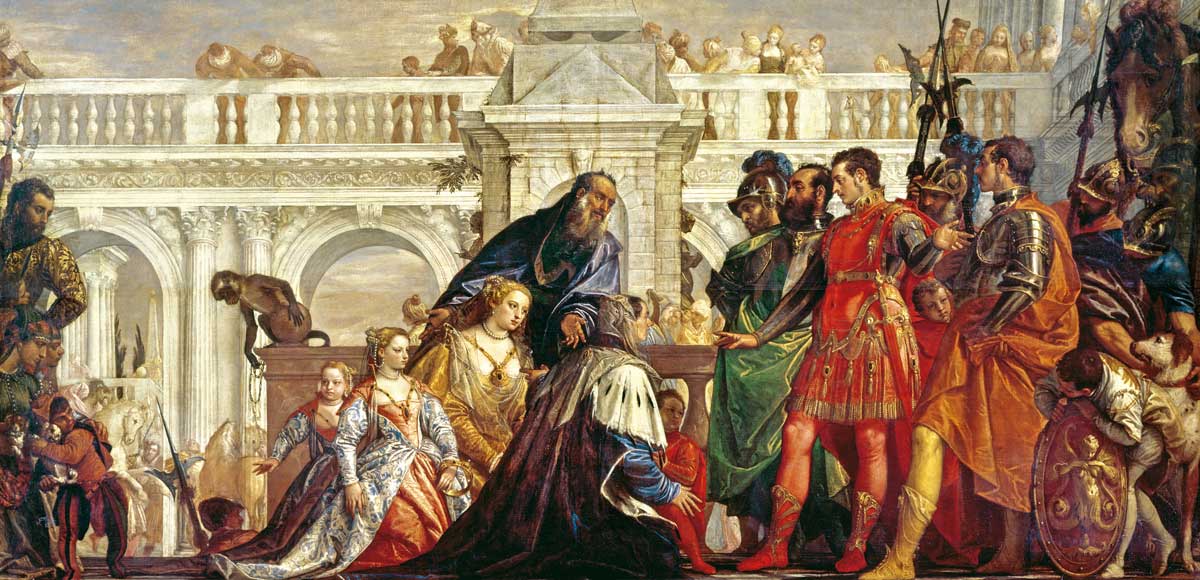Alexander the Great | History Today - 2 minutes read

Darius III, the last king of the Achaemenid Empire, was defeated at the Battle of Issus, in southern Anatolia, by Alexander the Great of Macedonia in 333 BC.
Darius fled the scene of his defeat, but his mother Sisigambis, his wife Stateira I and daughters, Stateira II and Drypetis, were captured and feared their conqueror’s revenge in the form, possibly, of sexual violence. But, according to the Roman chronicler Plutarch, Alexander assured them that he sought ‘no intimacy with them’ and that he would treat ‘these illustrious prisoners according to their virtue and character’.
Paolo Veronese’s painting, one of the very few he may have produced without studio assistants despite its grand scale, was commissioned for the palace of Francesco Pisani in Montagnana in the Italian Veneto. It depicts an exquisitely painted Sisigambis, kneeling ahead of her daughter-in-law and granddaughters, pleading for mercy to Alexander, who is gesturing and dressed in red ‘pantaloons’. But it seems she has mistaken Hephaestion – his counsellor and close friend, to Alexander’s left – for the king himself. Ironically, some art historians have argued that the characters of Alexander and Hephaestion should be reversed; that Alexander is actually the character in the orange robe.
What has never been in doubt since its creation in the mid-1560s is the greatness of this vast and joyously anachronistic painting by the Venetian ‘treasurer of art and colours’, its images far more resonant of the riches of Renaissance Venice than the dust of the Anatolian plain.
Goethe singled it out for praise on his trip to Venice in 1786, when he stayed at the Palazzo Pisani Moretta on the Grand Canal, to where the painting had been moved in the 17th century. The American novelist Henry James waxed lyrically about it following a visit in 1882 to London’s National Gallery, where the painting has been held since 1857 and where it continues to reside. ‘The picture sends a glow’, he wrote, ‘into the cold London twilight. You may sit before it for an hour and dream you are floating to the water-gate of the Ducal Palace.’
Source: History Today Feed